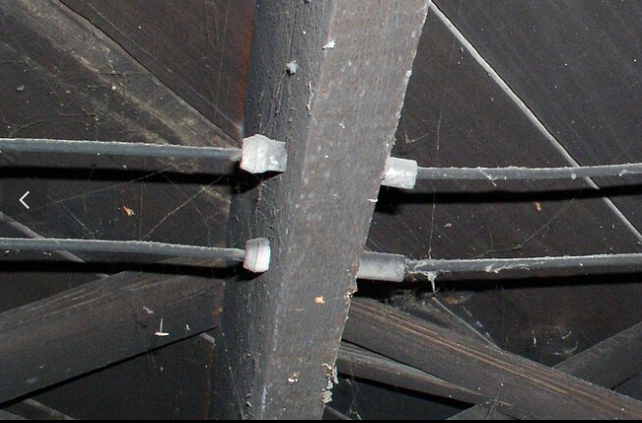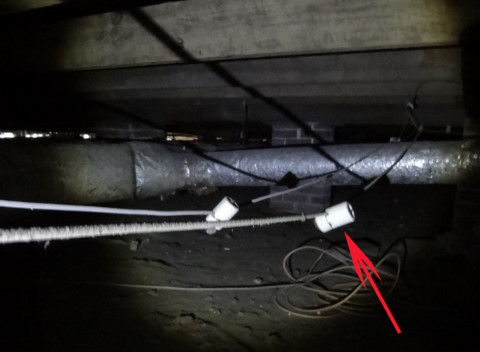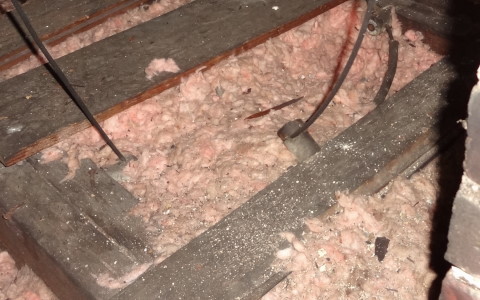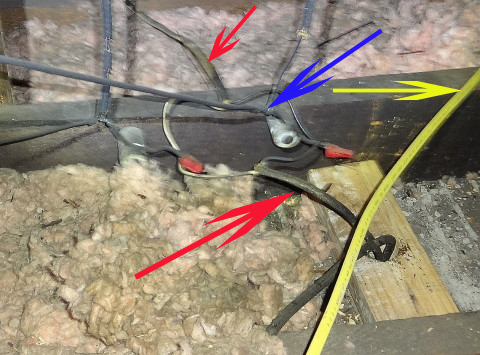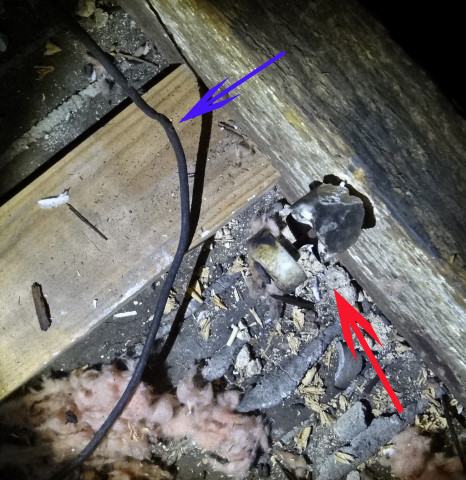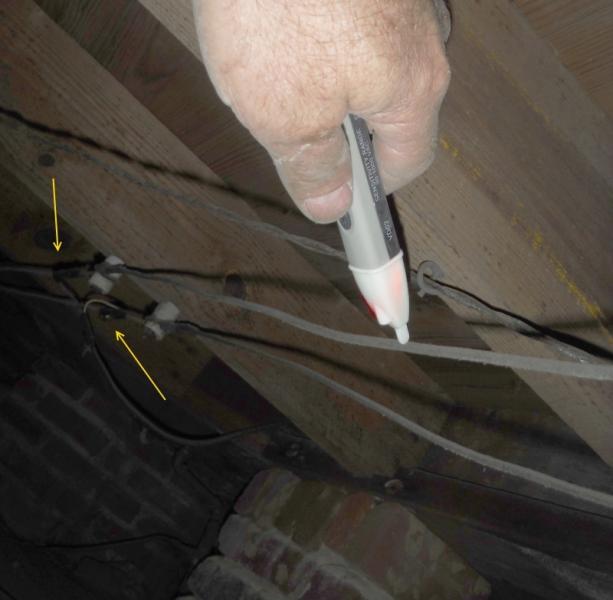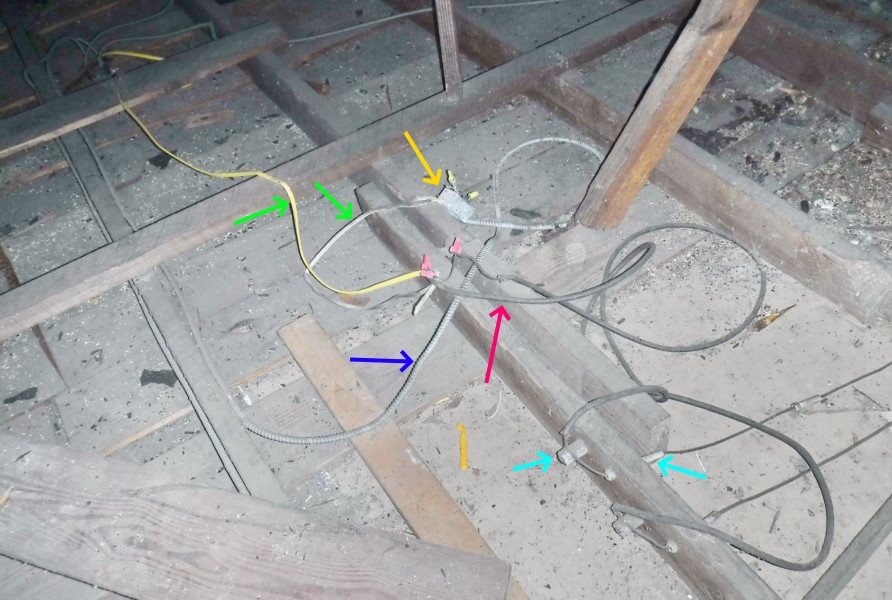Knob and Tube wiring is a method of wiring that was popular from about 1890 to 1940. Characterized by the ceramic knobs that held the conductors away from the joists and ceramic tubes that the conductors ran through when it had to pass through a joist or wall plate. While it is generally believed that knob and tube systems were safe and reliable when they were built it is likely to have been altered or damaged over time. In addition to this some consideration must be made as to the continued use of a system designed in the late 19th century especially considering that we’re well into the 21st century now. For this reason home inspectors almost certainly will recommend the system be evaluated by a qualified electrical contractor. At this point in time as we approach the year 2025 any knob and tube wiring still left in your home probably should be replaced. Below are some things to consider if k&t has been noted on your home.
Key Facts about Knob and Tube Wiring
- Knob and tube wiring was designed to be air cooled. So covering with insulation or combustibles is not allowed.
- Splices to other wiring methods must be in boxes. The conductors of the knob and tube should enter through opposite side of the box.
- Although as originally installed, splices were allowed in the open air however; they were soldered and taped in a special way. A splice added at a later date is unlikely to have been done correctly so it should be in a box.
- K&T wiring is subject to physical damage. Nails holding the knobs will rust through leaving the conductors hanging or lying on combustibles. Sometimes knobs are broken off for a variety of reasons.
- The rubber insulation on the wire has a tendency to become brittle and crack over the course of time creating a safety hazard.
- K&T systems do not meet modern electrical demands and needs. Many rooms may only have one outlet. Overloading this one circuit may tax the system.
- K&T systems do not have a grounding conductor. This means it is a two wire system. Modern homes have an additional grounding conductor for safety. This grounding conductor improves safety and helps protect modern electronic devices.
- A Ground Fault Circuit Interrupter (GFCI) can be used to protect people against electric shock in a two wire system. However it will not have a grounding conductor. Outlets without a grounding conductor must be labeled “No equipment grounding conductor” if they are of the three prong type.
- Many systems services have been upgraded from fuses to circuit breakers which is a good thing. Sometimes however this only gives the appearance of an upgraded system. An untrained individual may think the whole system has been upgraded when actually only the main panel has been upgraded. In this case a junction box is used to splice the old k&t circuits to the new breakers.
- The System service although upgraded may still be rather small by today’s standards.
- Outlets for k&t systems can lose their tension plug pull strength (not be able to hold a plug snugly) due to their age or be painted over. When an outlet gets loose and cannot hold a plug it should be replaced for safety.
- K&T should not cross each other without an insulator. Wiring should clear the framing materials by at least an inch. There should be 3” of separation for parallel conductors. Knobs should be no farther than 6” from a splice.
- Insurance companies are sometimes hesitant to insure homes with k&t.
- K&T systems were likely to have been professionally installed. Problems are usually with alterations, proper maintenance.
- Because K&T wiring was designed to be air cooled; the homes it was installed in are unlikely to have insulated walls. Homes of this era were often balloon framed; which actually will make it easier to upgrade (i.e. it’s easier to pull the wires through the wall).
- Remember that if more modern insulation requirements are desired then the knob and tube often must be removed because of the separation requirements.
- Most knob and tube systems were rated at and utilized 25 amp fuses ( modern branch circuits are usually 15 or 20 amp by comparison). When installed correctly and not incorrectly modified or damaged it was considered safe. At this time however the system is obsolete.
When I first wrote this article in March 26, 2013 I was still seeing homes in downtown Charleston and surrounding areas with this type of wiring and today many homes still have sections of this type of wiring though often it is spliced with other wiring types. Considering that many insurance companies will refuse to insure homes with this type of wiring it’s important to have your home inspected when you buy it. The inspector should identify this type of wiring if he sees it.
Below we’ll look at some pictures of typical defects we find out in the field.
Common Defects in Knob and Tube Wiring
The picture above shows the kind of mess we usually find on old homes that still have some existing knob and tube wiring. The light blue arrows point out the knob and tubes. The dark blue arrow shows BX or (flexible armored cable). The yellow arrow points out the open junction box. The green arrows show our more modern NM type electrical cables. We know that the yellow NM had to have been added after 2001. The house itself was reportedly built in 1946 and the picture was taken in 2025. So homes with knob and tube wiring still exist. In the picture you can see various installation defects including-
- connections made outside of a box,
- open junction boxes,
- boxes not secure to framing,
- boxes not grounded,
- broken tubes,
- knob and tube wiring touching each other.
- rubber bushings missing on the BX,
- strain relief not used on NM at box and other defects……
Conclusion
Knob and tube wiring had its day in the sun but now we must retire it to the pages of history. If your home still have some sections of knob and tube wiring we strongly encourage you to have it evaluated or removed by a qualified electrician.

